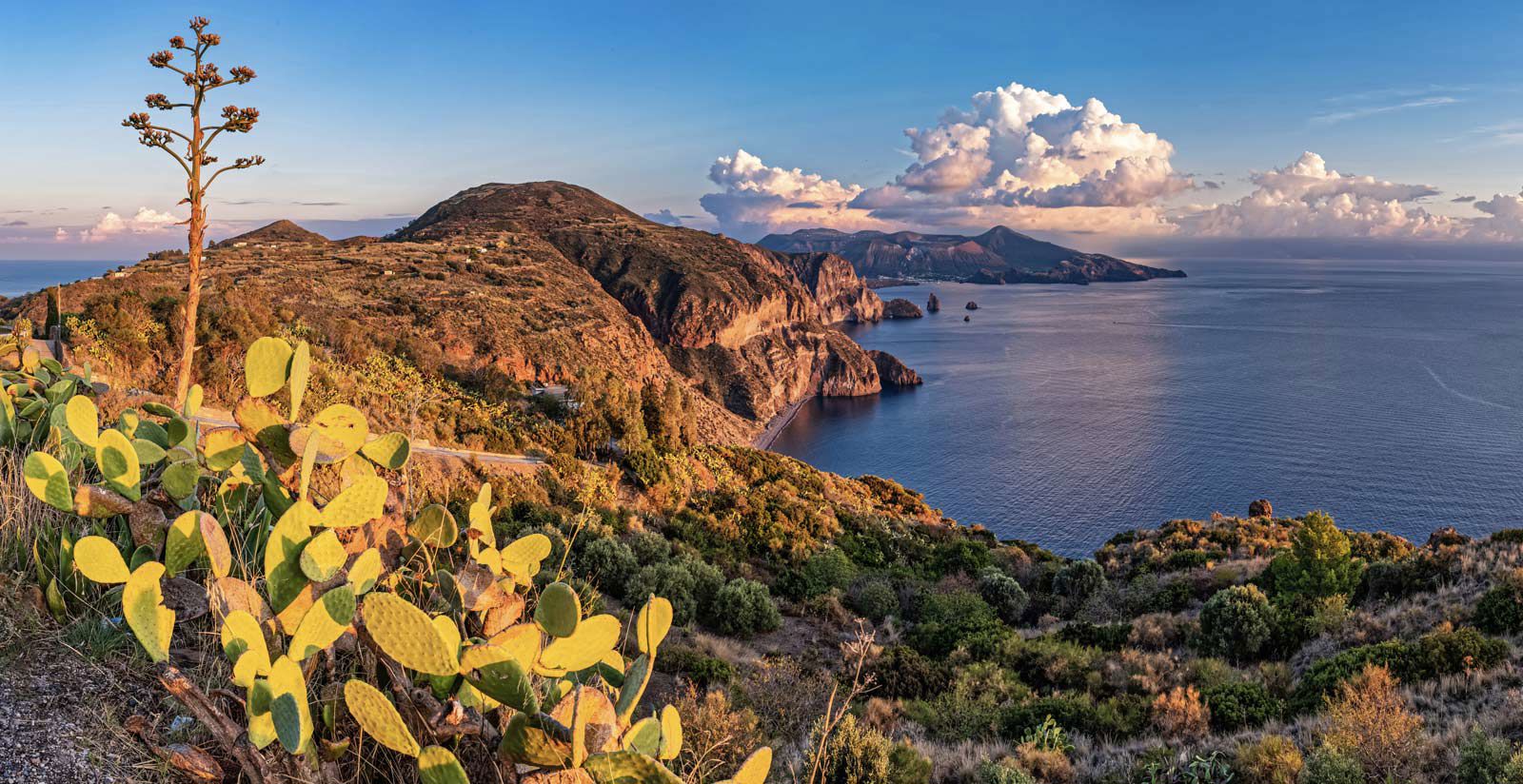Lipari (Italian pronunciation: [ˈliːpari], Sicilian: Lìpari, Latin: Lipara, Ancient Greek: Μελιγουνίς Meligounis or Λιπάρα Lipara) is the largest of the Aeolian Islands in the Tyrrhenian Sea off the northern coast of Sicily, southern Italy; it is also the name of the island’s main town and comune, which is administratively part of the Metropolitan City of Messina. Its population is 12,734, but during the May to September tourist season, the total population may reach up to 20,000.
Lipari is the largest of a chain of islands in a volcanic archipelago situated in between Vesuvius and Etna. The island has a surface area of 37.6 square kilometres (14.5 sq mi) and is 30 kilometres (19 mi) from Sicily. Besides the main town, most of the year-round population resides in one of the four main villages: Pianoconte is almost due west across the island, Quattropani in the northwest, Acquacalda along the northern coast, whereas Canneto is on the eastern shore north of Lipari town.
Geologists agree on the fact that Lipari was created by a succession of four volcanic movements, the most important of which was the third one, presumably lasting from 20,000 BC to 13,000 BC. A further important phenomenon should have happened around 9000 BC. The last recorded eruptions occurred in the fifth century CE when airborne pumice, together with volcanic ash, covered the Roman villages of the island.
The volcanoes are considered active, and steaming fumaroles and hydrothermal activity may still be seen. As a result of its volcanic origin, the island is covered with pumice and obsidian. Pumice mining has become a large industry on Lipari, and the pale pumice from Lipari is shipped worldwide.
Write us
show more
Special Offers


